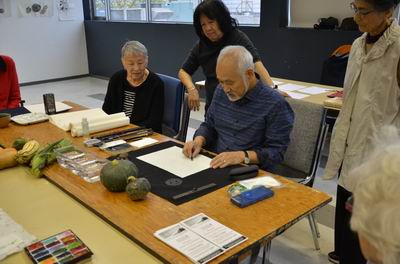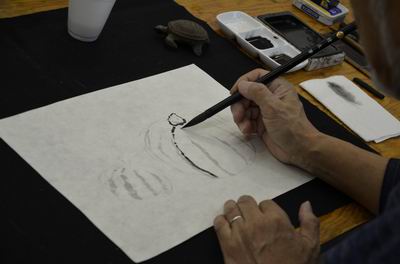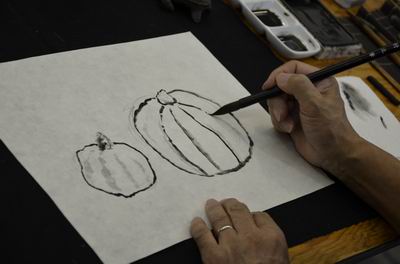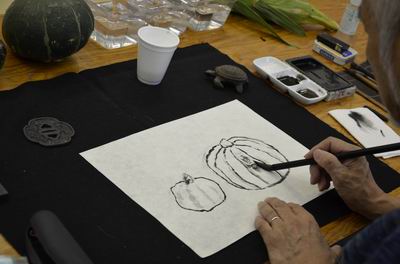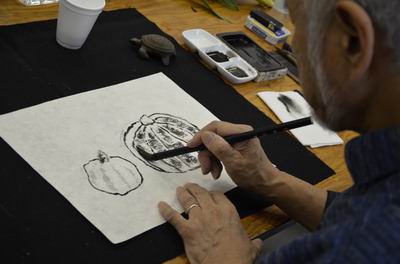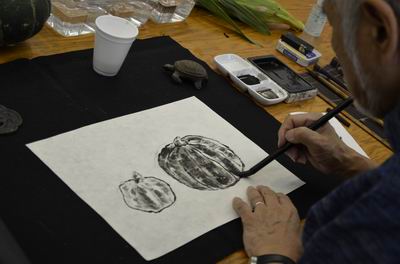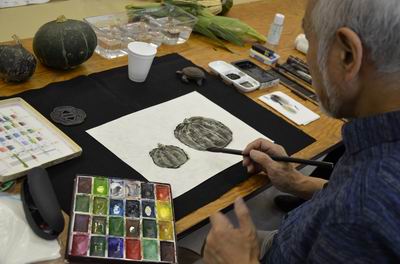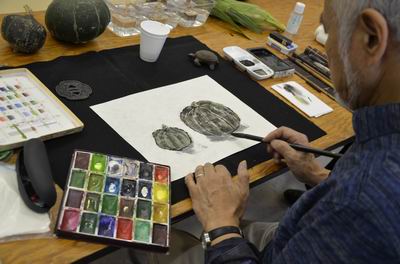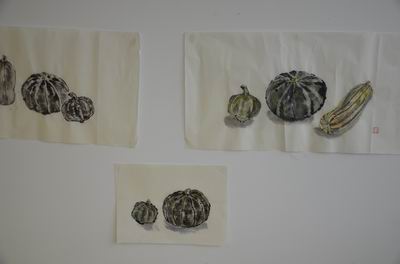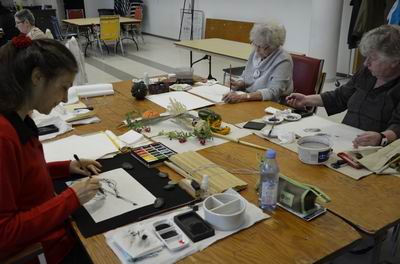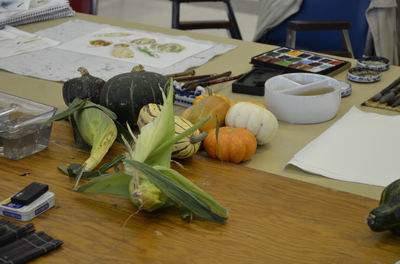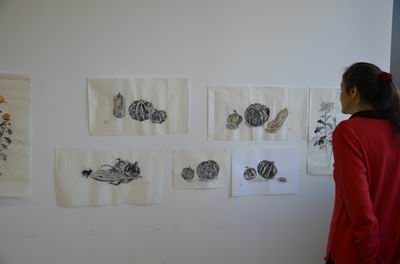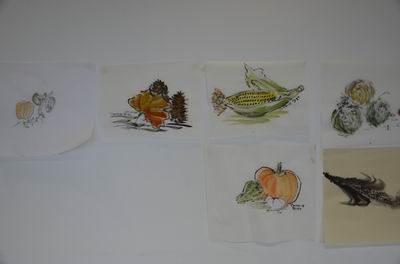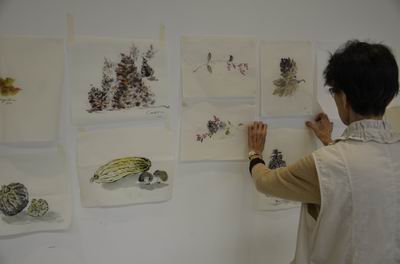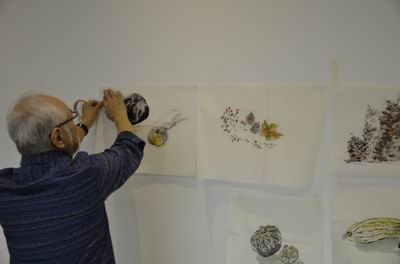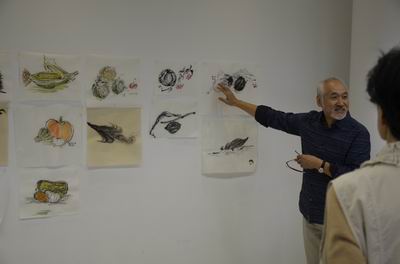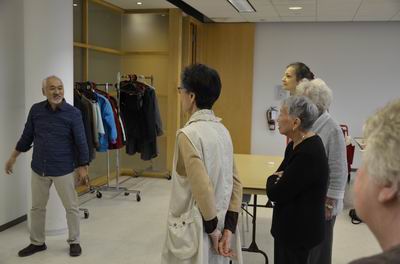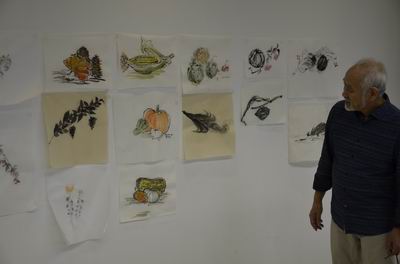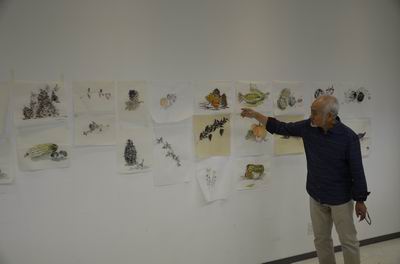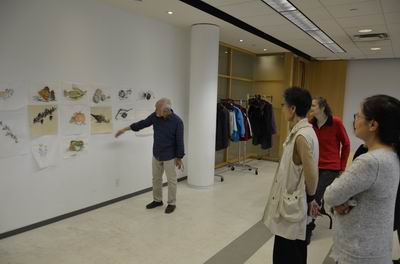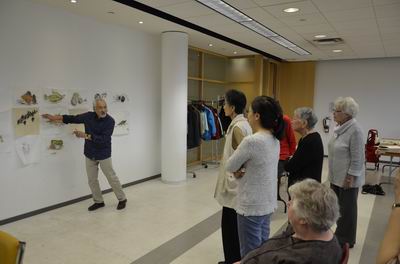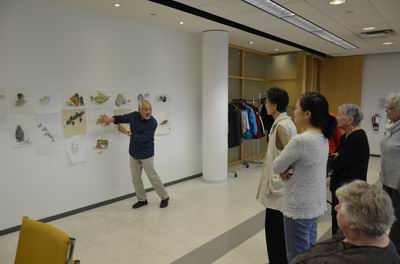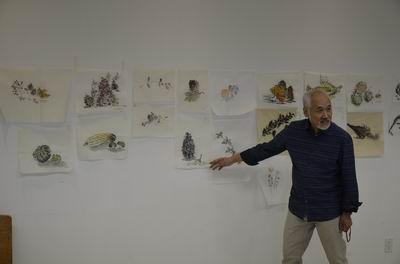Autumn Harvest with Hiroshi Yamamoto - October 12th, 2019
The rich colors of autumn - gold, orange, red and yellow - make painting autumn vegetables, fruits and flowers an attractive workshop. Artists brought their favorite fall vegetables to the workshop to paint. Hiroshi Yamamoto began by recommending we consider using charcoal to sketch our painting.
Use milk to add the light lines found on a squash. The milk prevents the sumi-e ink from filling the light lines on a squash. Hiroshi Yamamoto also used another type of clear resist paint available in Japan.
Then add dark ink to your vegetable following the charcoal sketch.
The result is the structure of your squash.
Squash has a rough texture. Use a dry brush to add the ink that indicates roughness.
Continue with the dry brush to complete the rough surface of the squash.
A slightly more wet brush fills in the surface.
Though you can use just sumi-e ink for a vegetable, consider adding some color to make your painting more natural.
Adding shadow is optional but can make your painting more realistic since shadow is usually found beside the vegetable.
It was the artists turn to paint in the workshop though Hiroshi Yamamoto left examples on the wall as guidance.
Painting autumn vegetables is like painting still life and it's a challenge! The vegetables have different textures and contain odd angles mixed with curves.
This squash, corn and pumpkins had artists sketching and using various brush strokes to capture the mix of shapes and colors.
Checking the paintings on the wall helped.
Then the artists started to post their own works on the wall.
Deciding which painting you want to put on the wall and then discuss can be difficult but always a rewarding learning experience.
Having masking tape is helpful.
Hiroshi Yamamoto pointed to the qualities he liked in each painting.
This led to discussion among the artists.
Sometimes simply using different paper leads to a different effect.
There are good points in every painting and Hiroshi Yamamoto highlighted them.
The audience found Hiroshi Yamamoto's comments insightful.
Often Hiroshi Yamamoto discussed why a certain painting worked.
Then he showed how an improvement would further strengthen the work.
His advice led to more dialogue with the artists. Each artist had the opportunity to explain how they created their painting and what they too liked and disliked.
Somtimes a few tips on brushwork or proportions could significantly improve a painting.
Placing vegetables before you and then painting them can be a rewarding artistic experience.
